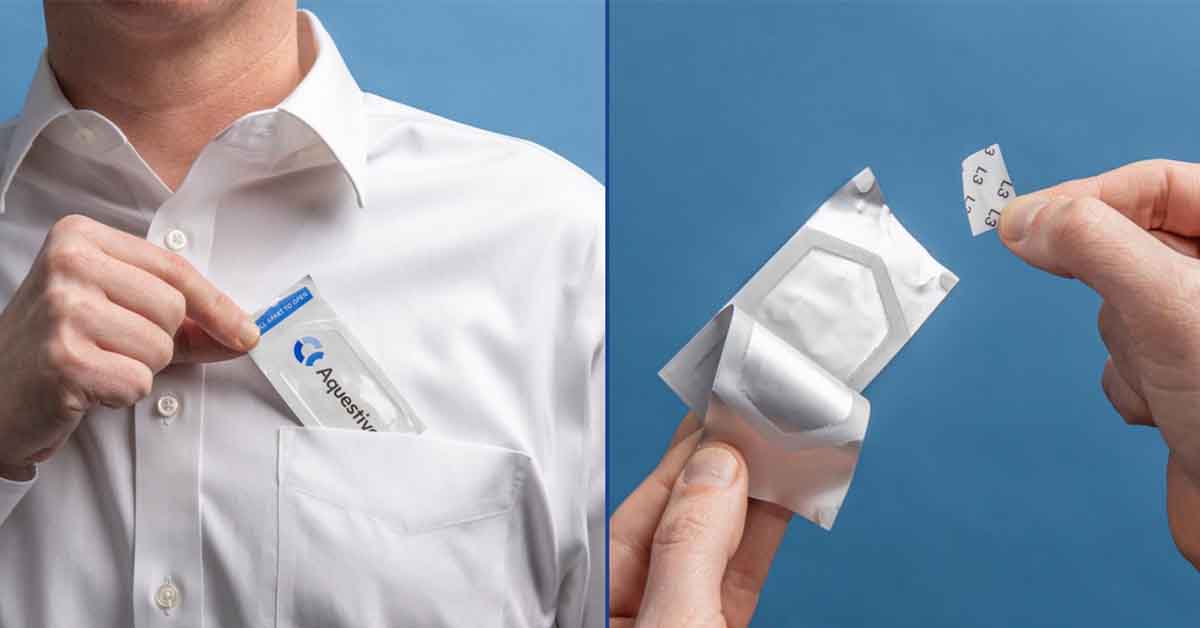The performance of AQST-109 — the thin-film epinephrine delivered sublingually — was comparable to traditional modes of delivery according to data presented at this year’s American Academy of Allergy, Asthma & Immunology Annual Meeting.
AQST-109 is different from auto-injectors and syringes in that there is no needle involved. The epinephrine is delivered via a small film placed under the tongue that dissolves quickly in saliva and is absorbed in the mouth.
Said Dr Matthew Greenhawt, director of the food challenge and research unit at Children’s Hospital Colorado:
AQST may actually represent a substantial treatment advancement for patients at risk for anaphylaxis because it can be more readily carried than a device-based epinephrine product.
This postage stamp-sized product can be carried in a wallet, your pocket or in a small purse — places that are a little bit harder for an autoinjector to fit
24 healthy adults (13 women; mean age, 35 years; age range, 24-49 years; 33% white) participated in the phase 1 clinical study. Participants each received a 12mg dose of AQST-109, a 0.3mg dose of epinephrine administered intramuscularly via syringe, and a 0.3mg dose delivered intramuscularly via epinephrine EpiPen-brand auto-injectors.
Researchers then took blood plasma samples before each dose and frequently up to 8 hours after administration to determine how AQST-109 compared to traditional means of epinephrine administration.
Although EpiPen produced a higher concentration of epinephrine (744.2 pg/mL) than AQST-109 (294 pg/mL) and syringe (411.2 pg/mL), AQST-109 had a much shorter time to maximum concentration (12 minutes) than EpiPen (23 minutes) and syringe (45 minutes).
Noted Greenhawt:
When looking at the area under the curve [AUC] values, the AQST-109 film fell between higher AUC for the EpiPen device and lower AUC for the manual injection when measured over a critical period of up to 30 minutes.
The researchers observed early and robust increases in systolic and diastolic blood pressure and pulse with AQST-109 reflecting the faster absorption when compared with EpiPen and syringe. Raising blood pressure — critical to stabilizing patients undergoing anaphylaxis — was strongest with AQST-109 in the first few minutes despite the higher concentration achieved with EpiPen.
Said Greenhawt:
In terms of safety and tolerability, most adverse events were consistent with the known physiologic effects of epinephrine across the treatments.
There were no significant treatment-related adverse effects reported. Those that were reported were mild, transient, and resolved with minimal intervention.
Added Greenhawt:
The results here add to the body of evidence indicating that AQST-109 shows promise as a viable, noninvasive and easy-to-carry alternative to device-based epinephrine delivery products for the treatment of anaphylaxis.





